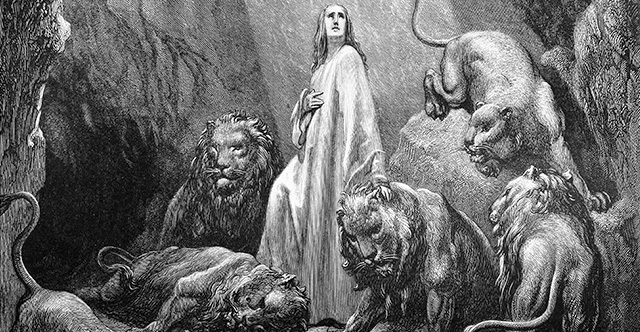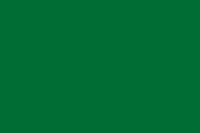
1
T
hen he brought me into the sanctuary and measured the doorposts, six cubits wide on one side and six cubits wide on the other side—the width of the tabernacle.
Na ka kawea ahau e ia ki te temepara; kei te whanganga i nga pou, e ono whatianga te whanui i tetahi taha, e ono whatianga te whanui i tetahi taha, ko te whanui tera o te tapenakara.
2
T
he width of the entryway was ten cubits, and the side walls of the entrance were five cubits on this side and five cubits on the other side; and he measured its length, forty cubits, and its width, twenty cubits.
Na, ko te whanui o te tatau, kotahi tekau whatianga; ko nga taha o te tatau, e rima nga whatianga i tetahi taha, e rima nga whatianga i tetahi taha; i whanganga ano ia i to reira roa, e wha tekau whatianga; ko te whanui e rua tekau whatianga.
3
A
lso he went inside and measured the doorposts, two cubits; and the entrance, six cubits high; and the width of the entrance, seven cubits.
Katahi ia ka haere ki roto, kei te whanganga i te pou o te kuwaha, e rua whatianga; ko te kuwaha, e ono whatianga; ko te whanui o te kuwaha e whitu whatianga.
4
H
e measured the length, twenty cubits; and the width, twenty cubits, beyond the sanctuary; and he said to me, “This is the Most Holy Place. ” The Side Chambers on the Wall
Heoi whanganga ana ia i to reira roa, e rua tekau whatianga te whanui, e rua tekau whatianga i mua i te temepara. Na ka mea ia ki ahau, Ko te wahi tino tapu tenei.
5
N
ext, he measured the wall of the temple, six cubits. The width of each side chamber all around the temple was four cubits on every side.
Muri iho ka whanganga ia i te taha o te whare, e ono whatianga; me te whanui ano i nga ruma o te taha, e wha whatianga, i nga taha o te whare a taka noa.
6
T
he side chambers were in three stories, one above the other, thirty chambers in each story; they rested on ledges which were for the side chambers all around, that they might be supported, but not fastened to the wall of the temple.
Na e toru nga whakapaparanga o nga ruma i te taha, ko tetahi i runga i tetahi, e toru tekau ki te rarangi, i ngoto ki te pakitara, ki to te whare, hei ruma mo nga taha a taka noa, kia u ai ki reira, kahore ia he unga i te pakitara o te whare.
7
A
s one went up from story to story, the side chambers became wider all around, because their supporting ledges in the wall of the temple ascended like steps; therefore the width of the structure increased as one went up from the lowest story to the highest by way of the middle one.
Na ka nui haere a whawhe noa whakarunga nga ruma o te taha; i haere tonu hoki whakarunga te karapotinga o te whare a taka noa: no reira haere tonu te whanui o te whare whakarunga, nui haere atu ana i to raro rawa tae noa ki to runga, ma waenga.
8
I
also saw an elevation all around the temple; it was the foundation of the side chambers, a full rod, that is, six cubits high.
I kite ano ahau i te tiketike o te whare a whawhe noa: ko nga turanga o nga ruma, kotahi tino kakaho e ono nei ona whatianga nui.
9
T
he thickness of the outer wall of the side chambers was five cubits, and so also the remaining terrace by the place of the side chambers of the temple.
Ko te matotoru o te pakitara, o tera mo nga ruma i nga taha, i waho, e rima whatianga; a ko te mea i mahue ko te wahi o nga ruma o te taha, no te whare era.
10
A
nd between it and the wall chambers was a width of twenty cubits all around the temple on every side.
Na he takiwa kei waenganui i nga ruma, e rua tekau whatianga, i nga taha katoa o te whare a taka noa.
11
T
he doors of the side chambers opened on the terrace, one door toward the north and another toward the south; and the width of the terrace was five cubits all around. The Building at the Western End
A i anga nga tatau o nga ruma ki te wahi i mahue, ko tetahi tatau ki te raki, ko tetahi tatau ki te tonga: a ko te whanui o te wahi i mahue e rima whatianga a tawhio noa.
12
T
he building that faced the separating courtyard at its western end was seventy cubits wide; the wall of the building was five cubits thick all around, and its length ninety cubits. Dimensions and Design of the Temple Area
Na, ko te whare i mua i te wahi motuhake i te pito ki te hauauru, e whitu tekau whatianga te whanui: a e rima whatianga te matotoru o te pakitara o taua whare a tawhio noa; tona roa e iwa tekau whatianga.
13
S
o he measured the temple, one hundred cubits long; and the separating courtyard with the building and its walls was one hundred cubits long;
Heoi ka whanganga ia i te whare, kotahi rau whatianga te roa; me te wahi motuhake, me taua whare, me ona taha, kotahi rau whatianga te roa;
14
a
lso the width of the eastern face of the temple, including the separating courtyard, was one hundred cubits.
Me te whanui o te aroaro o te whare, o te wahi motuhake ano whaka te rawhiti, kotahi rau whatianga.
15
H
e measured the length of the building behind it, facing the separating courtyard, with its galleries on the one side and on the other side, one hundred cubits, as well as the inner temple and the porches of the court,
I whanganga ano ia i te roa o te whare i te ritenga mai o te wahi motuhake, i muri hoki tera i tenei; me ona ara i tetahi taha, i tetahi taha, kotahi rau whatianga; me te temepara i roto, me nga whakamahau o te marae;
16
t
heir doorposts and the beveled window frames. And the galleries all around their three stories opposite the threshold were paneled with wood from the ground to the windows—the windows were covered—
Ko nga pou tatau, ko nga matapihi kuiti, me nga ara i nga whakapaparanga e toru a taka noa i te ritenga atu o te tatau, he mea paparua ki te rakau a taka noa, he mea pera ano i te whenua a tae noa ki nga hatapihi; he mea hipoki ano nga matapihi;
17
f
rom the space above the door, even to the inner room, as well as outside, and on every wall all around, inside and outside, by measure.
Tae noa ki te wahi i runga ake i te tatau, ki te whare i roto, ki to waho, i te pakitara katoa a tawhio noa, i roto, i waho, he mea whanganga.
18
A
nd it was made with cherubim and palm trees, a palm tree between cherub and cherub. Each cherub had two faces,
I mahia ano ki reira he kerupima, he nikau; he nikau i te takiwa o tetahi kerupa, o tetahi kerupa, e rua hoki nga mata o te kerupa kotahi.
19
s
o that the face of a man was toward a palm tree on one side, and the face of a young lion toward a palm tree on the other side; thus it was made throughout the temple all around.
I anga te mata tangata ki te nikau i tetahi taha, te mata o te raiona ki te nikau i tetahi taha; i peratia te mahinga puta noa i te whare, a tawhio noa.
20
F
rom the floor to the space above the door, and on the wall of the sanctuary, cherubim and palm trees were carved.
I te whenua a tae noa ki runga ake i te tatau i hanga he kerupima, he nikau, he penei te pakitara o te temepara.
21
T
he doorposts of the temple were square, as was the front of the sanctuary; their appearance was similar.
He tapawha nga pou o te temepara; na, ko te aronga mai o te wahi tapu, ko te ahua, rite tonu ki te ahua o te temepara.
22
T
he altar was of wood, three cubits high, and its length two cubits. Its corners, its length, and its sides were of wood; and he said to me, “This is the table that is before the Lord.”
Ko te aata he rakau, e toru whatianga te tiketike, a ko te roa e rua whatianga; na, ko nga koki, ko tona roanga, ko ona pakitara, he rakau. Na ko tana kianga mai ki ahau, Ko te tepu tenei i te aroaro o Ihowa.
23
T
he temple and the sanctuary had two doors.
A e rua nga tatau o te temepara, o te wahi tapu.
24
T
he doors had two panels apiece, two folding panels: two panels for one door and two panels for the other door.
Ko nga tatau he aparua, huri ai nga apa; e rua nga apa mo tetahi o nga tatau, e rua nga apa mo tetahi.
25
C
herubim and palm trees were carved on the doors of the temple just as they were carved on the walls. A wooden canopy was on the front of the vestibule outside.
I mahia ano ki aua tatau o te temepara etahi kerupima me etahi nikau, he mea rite tonu ki era i mahia ki nga pakitara; he papa matotoru hoki i te aronga o te whakamahau i te taha ki waho.
26
T
here were beveled window frames and palm trees on one side and on the other, on the sides of the vestibule—also on the side chambers of the temple and on the canopies.
A he matapihi kuiti, he nikau hoki, i tetahi taha, i tetahi taha, i nga taha hoki o te whakamahau: koia era, ko nga ruma o te taha o te whare, me nga papa matotoru hoki.
 English
English
 Albanian - Shqip
Albanian - Shqip
 Arabic - العربية
Arabic - العربية
 Bulgarian - Български
Bulgarian - Български
 Chinese - 汉语
Chinese - 汉语
 English - English
English - English
 French - Français
French - Français
 German - Deutsch
German - Deutsch
 Italian - Italiano
Italian - Italiano
 Māori - Te Reo Māori
Māori - Te Reo Māori
 Portuguese - Português
Portuguese - Português
 Romanian - Română
Romanian - Română
 Russian - Русский
Russian - Русский
 Somali - Af Soomaali
Somali - Af Soomaali
 Spanish - Español
Spanish - Español
 Ukrainian - Українська
Ukrainian - Українська
 Vietnamese - Tiêng Viêt
Vietnamese - Tiêng Viêt
 Māori
Māori
 Albanian - Shqip
Albanian - Shqip
 Arabic - العربية
Arabic - العربية
 Bulgarian - Български
Bulgarian - Български
 Chinese - 汉语
Chinese - 汉语
 English - English
English - English
 French - Français
French - Français
 German - Deutsch
German - Deutsch
 Italian - Italiano
Italian - Italiano
 Māori - Te Reo Māori
Māori - Te Reo Māori
 Portuguese - Português
Portuguese - Português
 Romanian - Română
Romanian - Română
 Russian - Русский
Russian - Русский
 Somali - Af Soomaali
Somali - Af Soomaali
 Spanish - Español
Spanish - Español
 Ukrainian - Українська
Ukrainian - Українська
 Vietnamese - Tiêng Viêt
Vietnamese - Tiêng Viêt
